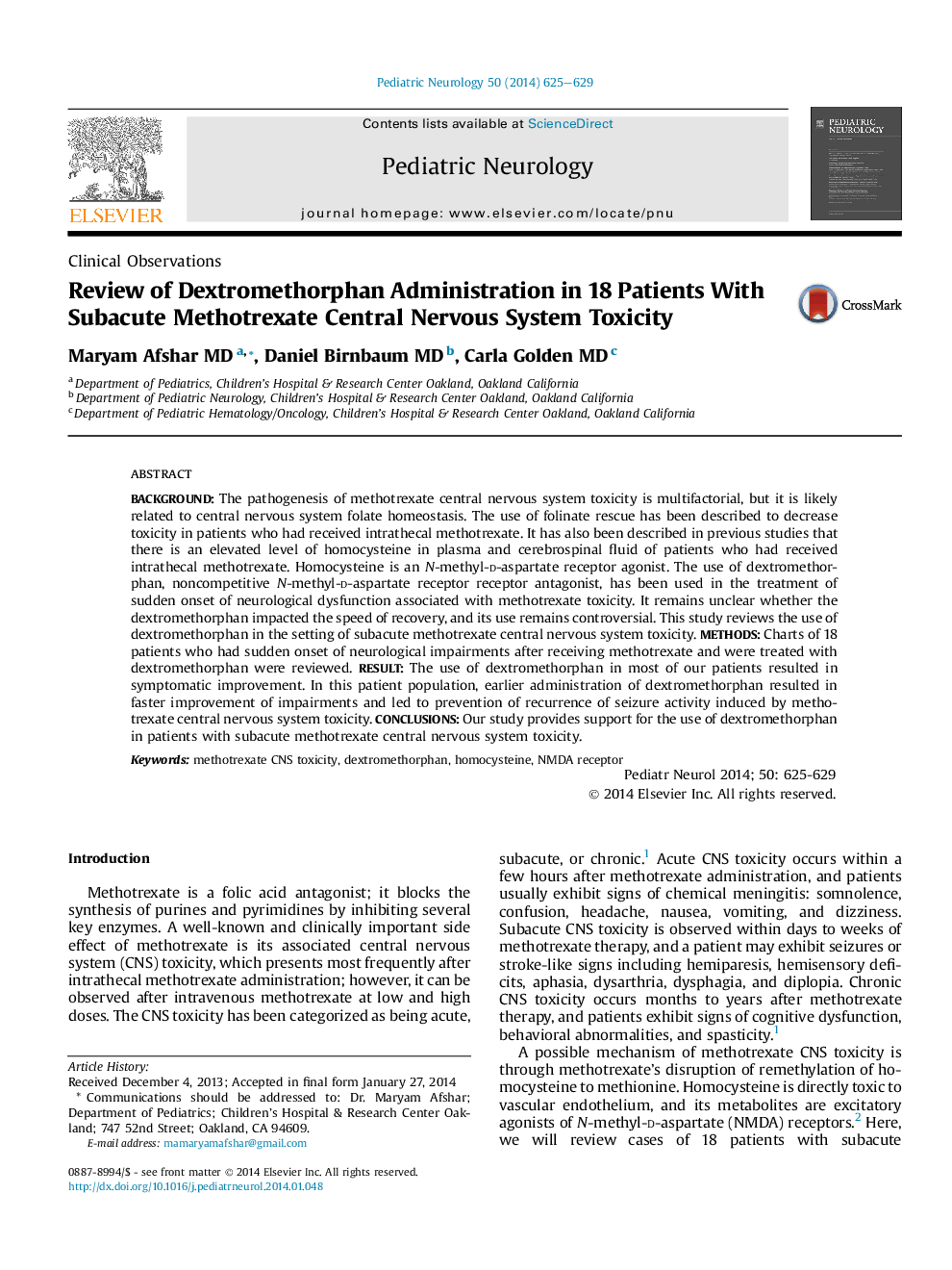| Article ID | Journal | Published Year | Pages | File Type |
|---|---|---|---|---|
| 3084867 | Pediatric Neurology | 2014 | 5 Pages |
BackgroundThe pathogenesis of methotrexate central nervous system toxicity is multifactorial, but it is likely related to central nervous system folate homeostasis. The use of folinate rescue has been described to decrease toxicity in patients who had received intrathecal methotrexate. It has also been described in previous studies that there is an elevated level of homocysteine in plasma and cerebrospinal fluid of patients who had received intrathecal methotrexate. Homocysteine is an N-methyl-d-aspartate receptor agonist. The use of dextromethorphan, noncompetitive N-methyl-d-aspartate receptor receptor antagonist, has been used in the treatment of sudden onset of neurological dysfunction associated with methotrexate toxicity. It remains unclear whether the dextromethorphan impacted the speed of recovery, and its use remains controversial. This study reviews the use of dextromethorphan in the setting of subacute methotrexate central nervous system toxicity.MethodsCharts of 18 patients who had sudden onset of neurological impairments after receiving methotrexate and were treated with dextromethorphan were reviewed.ResultThe use of dextromethorphan in most of our patients resulted in symptomatic improvement. In this patient population, earlier administration of dextromethorphan resulted in faster improvement of impairments and led to prevention of recurrence of seizure activity induced by methotrexate central nervous system toxicity.ConclusionsOur study provides support for the use of dextromethorphan in patients with subacute methotrexate central nervous system toxicity.
